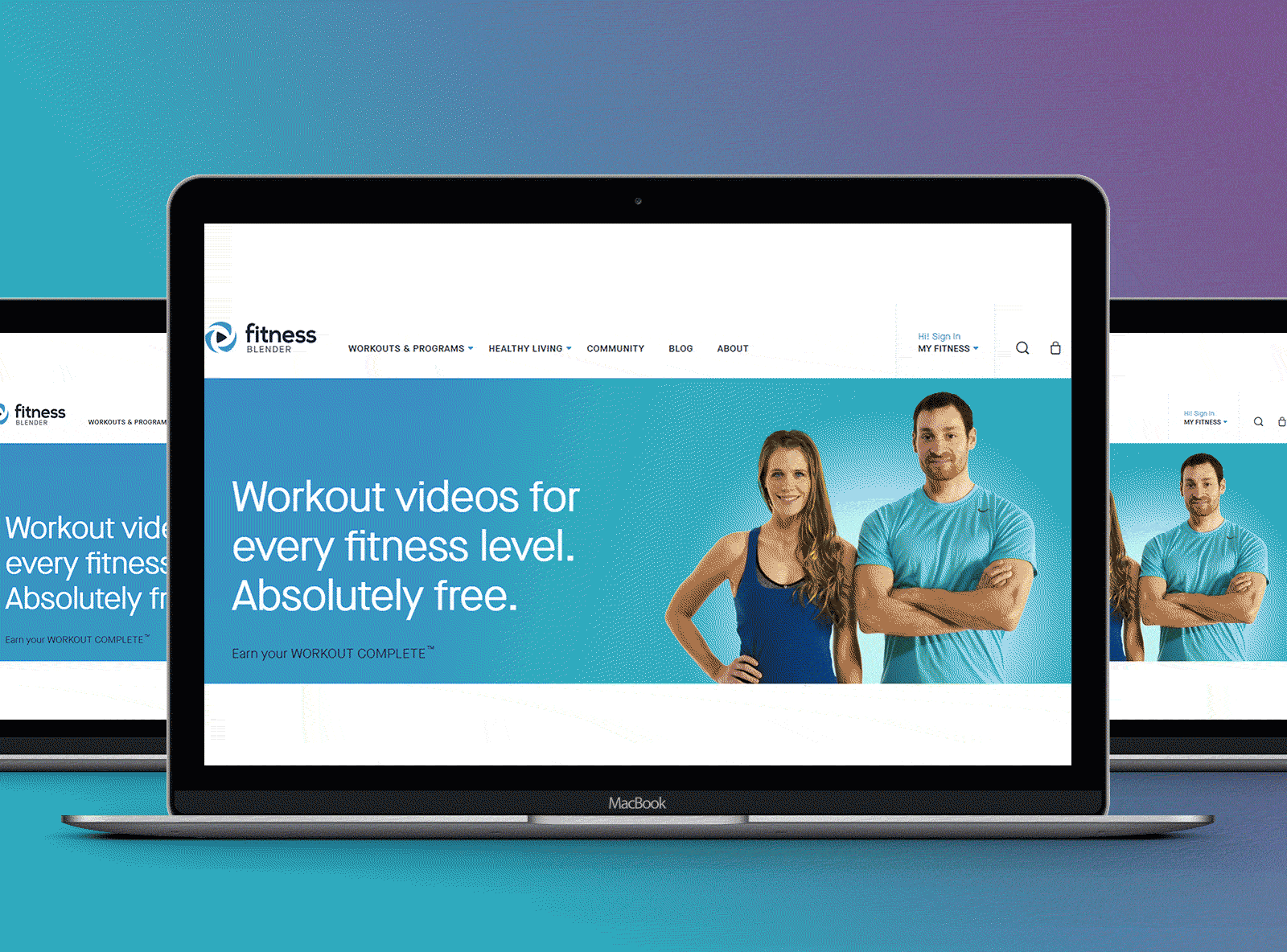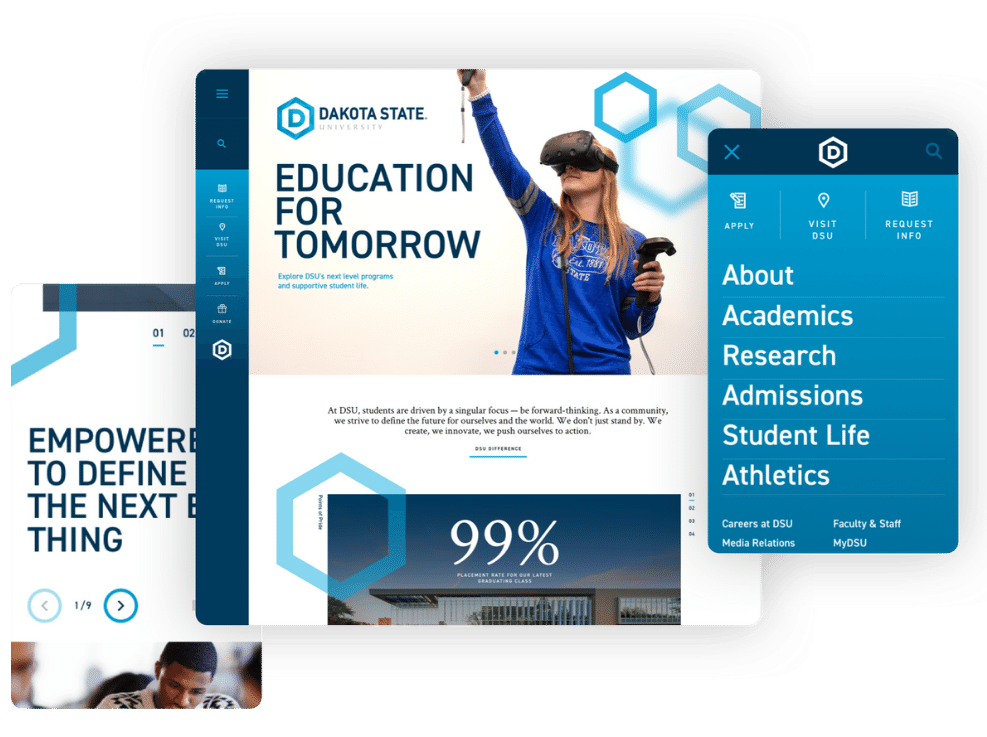Differences Between Custom-made and Template-Based Website Design
Differences Between Custom-made and Template-Based Website Design
Blog Article
The Power of User-Centered Website Style in Growing Your Online Target Market
Reliable style principles-- such as intuitive navigating and accessibility-- are vital in promoting user fulfillment and commitment. What methods can companies embrace to ensure their layouts reverberate with users and inevitably drive development?

Recognizing User-Centered Design
User-Centered Design (UCD) is an essential approach to site growth that prioritizes the requirements, preferences, and habits of end users throughout the layout procedure. This methodology emphasizes comprehending users deeply-- through study approaches such as interviews, studies, and functionality screening-- to produce an internet site that reverberates with them. By including customer responses at every stage, designers can guarantee that the end product aligns very closely with customer assumptions.
UCD promotes iterative layout, where models are tested and refined based on customer interactions and experiences. This cycle not just improves usability but additionally cultivates a sense of possession among users, as they feel their input is valued and impactful. Additionally, UCD helps recognize prospective barriers and discomfort points in the individual trip, enabling designers to address these obstacles proactively.
Eventually, accepting UCD leads to sites that are more intuitive, engaging, and effective. By placing customers at the center of the layout procedure, companies can create electronic experiences that not only draw in yet also retain their target market, driving greater complete satisfaction and commitment. In an affordable on-line landscape, this strategy is vital for attaining continual success.
Key Concepts of User Experience
An effective user experience (UX) rests on a number of essential concepts that assist the style procedure and boost communication in between customers and the web site. Usability is vital; the site has to be user-friendly, permitting customers to navigate easily and locate info swiftly. This includes clear labeling and a sensible structure that minimizes cognitive load.
Secondly, access plays a critical role in making sure that all users, no matter their impairments or capabilities, can efficiently engage with the internet site. Integrating alt text for images, key-board navigation, and screen viewers compatibility promotes inclusivity.
Consistency is an additional crucial principle. A cohesive layout language, from color pattern to typography, aids individuals build knowledge and count on with the website (Website Design). It additionally strengthens brand identification
Furthermore, responses systems are vital. Customers ought to obtain clear and prompt reactions to their activities, whether with visual signs or confirmation messages, which boosts their confidence in browsing the site.
Finally, mobile responsiveness can not be neglected. With a raising number of customers accessing sites using smart phones, a design that adjusts flawlessly to different display sizes is important for maintaining a positive customer experience.

Benefits for Online Engagement
Effective online interaction provides countless advantages that can dramatically improve a website's general efficiency - Website Design. By promoting meaningful communications between customers and the site, companies can cultivate a loyal audience that returns with consistency. Involved individuals are more probable to share material, thus raising natural reach and attracting brand-new visitors through word-of-mouth promo
Enhanced online interaction also causes boosted customer complete satisfaction. When customers discover a website that reverberates with their demands, they are more inclined to explore its offerings completely, which can result in greater conversion rates. Furthermore, appealing material encourages individuals to invest even more time on the site, reducing bounce prices and positively influencing search engine ranking algorithms.
Furthermore, efficient interaction provides important insights right into user preferences and behaviors (Website Design). By analyzing customer interactions, organizations can tailor their material and layout methods to satisfy the evolving expectations of their audience. This adaptive approach not only boosts interaction however likewise enhances the brand name's online reputation as user-centric and responsive
Eventually, focusing on on-line engagement through user-centered style produces a growing ecosystem where both the target market and the organization benefit, resulting in sustained development and success in the electronic landscape.

Strategies for Effective Style
To make best use of the advantages of online engagement, using details techniques in site layout is paramount. First, instinctive navigation is important; customers must easily find information without complication. A well-structured menu, clear tags, and a sensible hierarchy boost the individual experience and reduce bounce prices.
Second, receptive style is critical in today's multi-device environment. Guaranteeing that a web site adjusts effortlessly to numerous display dimensions cultivates ease of access, therefore fitting a broader target market. This adaptability not just enhances user contentment but also favorably impacts internet search engine positions.
Third, the use of aesthetic power structure guides individuals' interest to important elements, such as phone call to action (CTAs) Using contrasting shades, varying font sizes, and tactical spacing can effectively guide users toward preferred actions, helping with greater communication.
Additionally, carrying out consistent branding across all pages constructs trust fund and recognition. A cohesive shade scheme, images, and typography enhance brand identification and develop a specialist look.
Last but not least, optimizing loading speeds is essential. Individuals are less likely to engage with a slow-loading site, making performance optimization an important aspect of efficient layout. By integrating these methods, site designers can improve user experience and eventually expand their online audience.
Real-World Success Stories
Success stories in user-centered web site layout illustrate the substantial advantages of focusing on customer experience. As an outcome, they experienced a 250% boost in on-line donations, showing exactly how an instinctive style can drive user engagement and support.
An additional engaging instance is that of Airbnb, which utilized user-centered style principles to improve their reservation process. By simplifying the individual trip and incorporating personalized recommendations, they substantially decreased site desertion rates. This concentrate on user experience added to an income growth of over 70% in a single year, emphasizing the connection in between properly designed interfaces and monetary success.
Moreover, the shopping titan, ASOS, executed customer testing to improve their mobile application. By attending to user discomfort factors, they achieved a remarkable 30% rise in mobile sales. These examples highlight that spending in user-centered style not only boosts individual fulfillment but additionally drives concrete service results, enhancing the essential function of user experience in accomplishing online growth.
Final Thought
By prioritizing individual requirements and choices, organizations can develop intuitive find out this here and available electronic experiences that promote commitment and drive conversions. The combination of customer responses throughout the layout procedure not just lowers bounce prices yet additionally urges expedition.
User-Centered Layout (UCD) is a basic strategy to site advancement that prioritizes click to find out more the needs, preferences, and behaviors of end users throughout the design process. By incorporating user feedback at every phase, developers can ensure that the last item lines up carefully with individual expectations.
A successful user experience (UX) hinges on numerous vital concepts that assist the style process and enhance communication in between customers and the internet site.Success tales in user-centered site design highlight the concrete benefits of focusing on individual experience. These instances highlight that investing in user-centered layout not just enhances user contentment however likewise drives his comment is here tangible organization outcomes, reinforcing the critical duty of individual experience in achieving on-line development.
Report this page